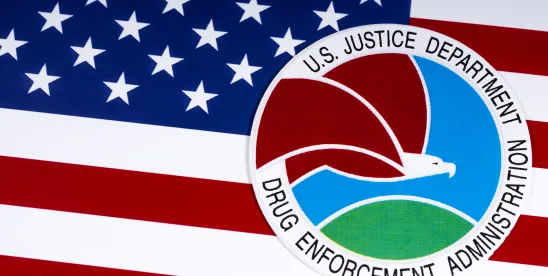Often wrong, never in doubt. That’s our promise here at Budding Trends. A little over a year ago, we wrote these words: “DEA will reschedule marijuana from Schedule 1 to Schedule III.” We later acknowledged we (may have) jumped the gun on that and modified our prediction to be that rescheduling won’t happen in 2025. To be fair, that prediction is almost going to prove true but not exactly the way we meant it.
If you’d permit us to revise and extend our remarks (hopefully) just once more, there have been several recent developments, which could suggest that with the changing administration came a shifting of tides such that rescheduling marijuana has returned to an uncertain proposition.
Most notably, last week DEA released its 2025 National Drug Threat Assessment (NDTA) Report. That report of DEA’s actions and inactions related to the formal rescheduling process, coupled with other recent accusations noted here and here, points toward a DEA that will fight against rescheduling.
What’s the Report Say About Marijuana?
Robert Murphy, DEA’s acting administrator, states that the purpose of the report is to provide a “national-level perspective on the threats posed by deadly illicit drugs and the violent transnational criminal organizations (TCOs) responsible for producing the drugs poisoning our communities.” Given this purpose, it might surprise many readers that a decent sized section of the report is dedicated to marijuana, specifically marijuana that has been legalized. For context, the other drugs the DEA decided warranted a separate section in the report are fentanyl, nitazenes, xylazine, heroin, methamphetamine, and cocaine.
With respect to marijuana, the report states:
- Cannabis growers in states where cultivation is legal (e.g., Oklahoma), particularly Chinese TCOs and Mexican cartels, are the main suppliers for the illicit marijuana markets in the rest of the United States.
- Despite legalization, the “black market” for marijuana has expanded significantly during the last two decades as Chinese and other Asian TCOs have taken control of the marijuana trade.
- Chinese TCOs are producing the “most potent form of marijuana in the history of drug trafficking,” with a THC content averaging 25% to 30%.
- Even in states where marijuana has been legalized, THC levels are “largely unregulated.”
- States that have legalized marijuana usually have the highest rates of marijuana use in the country, with increasing usage by vulnerable demographics.
- Product labeling controls are insufficient, including for Delta-8 products, leading to an increase in injury due to unintentional exposure, particularly among children.
Notably – and if we’re being candid, frustratingly – the report does not include sources or citations for most of its sweeping assertions regarding marijuana, including its assertions regarding the interconnection between the legalization of marijuana and increased transnational crime and the suspect claims that legal markets don’t sufficiently regulate THC potency or product labeling. That said, the assertions are there.
Does the Report Spell Doom and Gloom or Is It DEA’s Way of Outlining What Safeguards Need to Be in Place?
One fair reading of the report is that DEA is all but guaranteed to oppose rescheduling, especially given the report’s repeated emphasis on the connection between state-run programs and both increased transnational crime and increased marijuana usage among vulnerable populations. A more glass-half-full reading could be that DEA is telling us, and the administrative law judge that will one day oversee the rescheduling hearings, what rulemaking it will insist be in place if marijuana is ultimately rescheduled.
The marijuana-specific concerns outlined in the report could foretell universal regulations that should apply to all legal markets, including:
- Better tracking to avoid legally grown marijuana from entering illicit markets, especially through Chinese TCOs and Mexican cartels;
- Refined implementation of THC potency caps;
- Uniform product labeling requirements, including for Delta-8 products, to limit unintended exposure;
- Uniform testing regulations across all legal markets; and
- Regulation of hemp-derived products to ensure product labels are accurate and such products do not contain other cannabinoids, terpenes, or chemical contaminants that are not listed on the product label.






 />i
/>i
